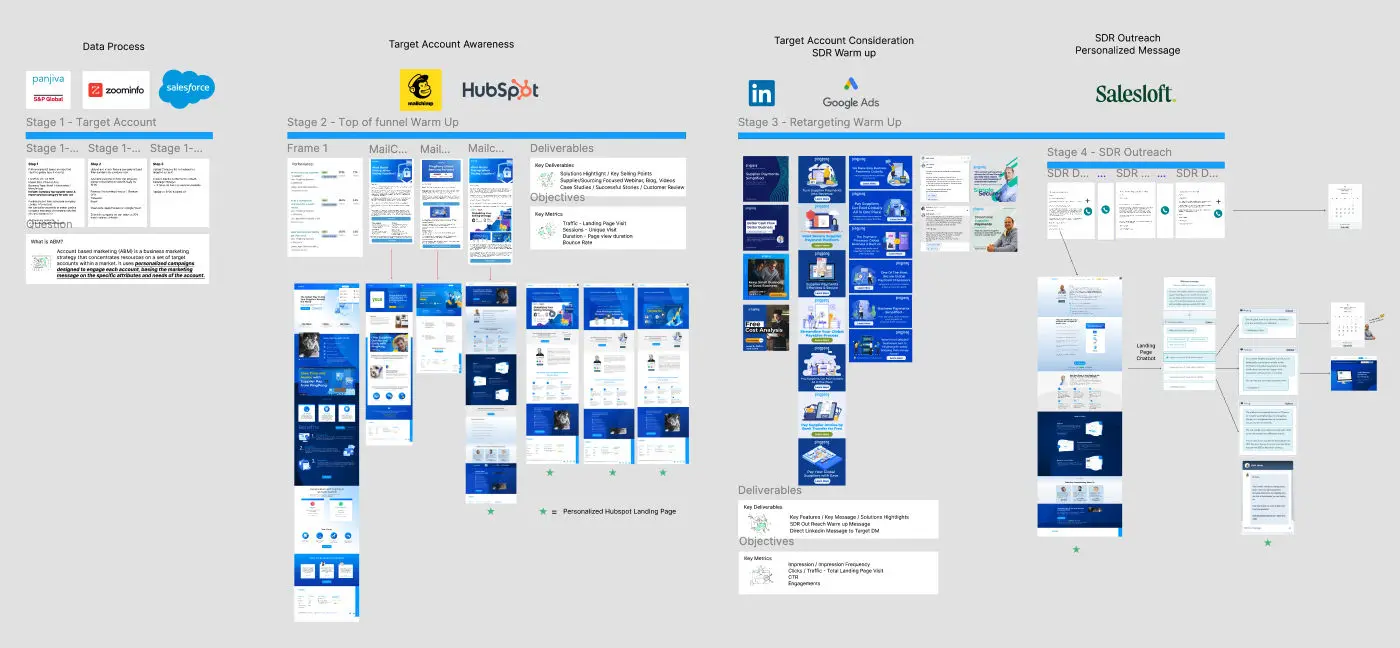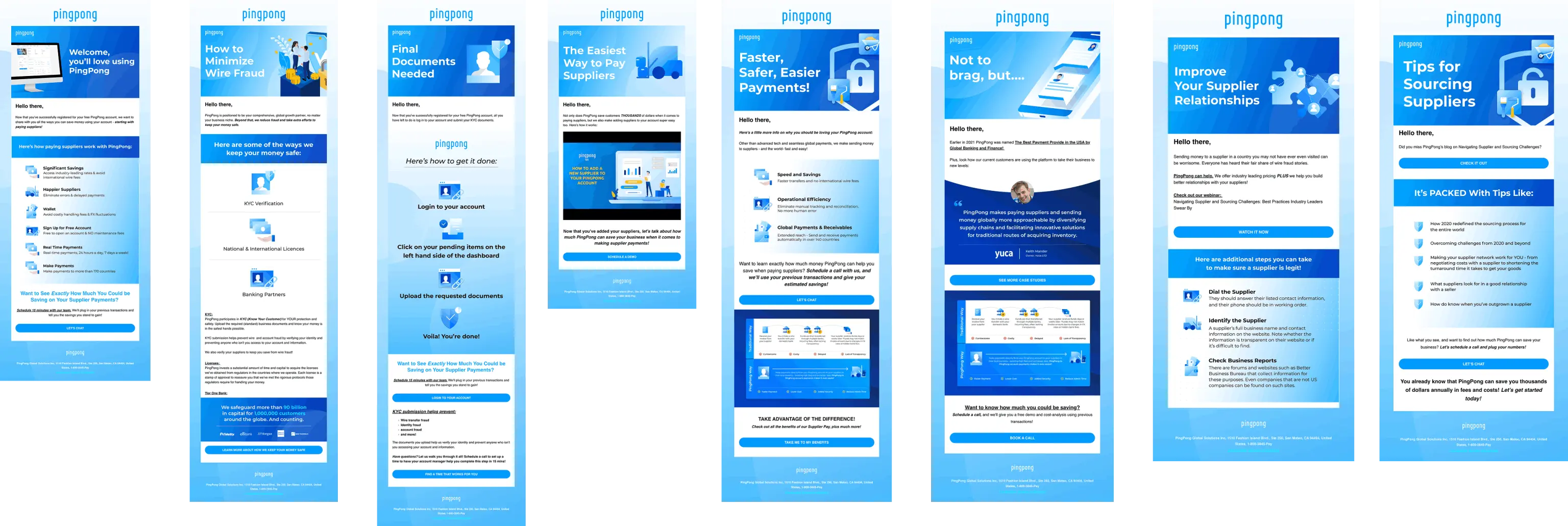
Image Description
Email marketing is still one of the most powerful tools in a marketer’s arsenal. But many companies are failing at it. They’re spending hours crafting the perfect email campaigns, sending them out, and hoping for the best, only to be met with disappointing open rates, low engagement, and dismal conversion rates.
I’m going to walk you through exactly how I do it for ourselves and share the strategies and tactics that make our email marketing efforts successful.
I want to share why I email marketing is failing for so many businesses today. While email is still a high-conversion channel, many companies are overlooking the basics and missing out on crucial opportunities to engage their audience.
The biggest mistake businesses make is sending irrelevant content to their customers and subscribers. Your customers aren’t just “subscribers”—they are real people with unique interests, pain points, and preferences.
When you fail to segment your email list properly and send content that resonates with each subscriber, you’re essentially throwing your marketing dollars down the drain (I am referring time your marketing spend to draft, proofread, code, and execute the email campaign). Irrelevant content leads to unsubscribes, low engagement, and most importantly, missed sales.
My next point is that personalization is key to email marketing success. Today’s consumers expect brands to understand their needs and preferences. A generic email that addresses your subscribers with a “Dear Customer” is no longer enough. Without personalizing emails based on behavior, demographics, or purchase history, you’re missing out on the chance to create meaningful connections with your audience.
Another issue is inconsistency. Some companies blast their audience with multiple emails a week, while others send one email a month, leaving subscribers wondering if they’ve been forgotten. Both extremes can hurt your results.
Sending emails too often leads to fatigue and unsubscribes, while sending too few can make your brand forgettable. The key is finding the right balance that works for your audience—sending emails often enough to remain top-of-mind, but not so frequently that it becomes overwhelming.
If your email subject line isn’t compelling, your emails will never be opened. Many marketers underestimate the power of the subject line. It’s the first (and often the only) thing that determines whether a subscriber will open your email or send it straight to the trash bin.
Emails with generic, uninspiring subject lines are more likely to get ignored. To be successful, your subject line must pique curiosity, provide value, or create urgency.
Finally, many companies don’t test their email campaigns. A/B testing subject lines, email copy, design, and CTAs (calls to action) is a crucial part of optimizing your email marketing strategy. Without constant testing and optimization, you’re just guessing at what might work.

Image Description
Now that we know common reason for email marketing strategies are falling short, let’s take a look at how we do it differently.
1. Segment and Personalize List
The first thing we do is to clean the data, validate the email deliverability and segment our email list into targeted groups. Segmentation is the foundation of personalization—it allows us to send the right message to the right person at the right time.
I use several segmentation strategies: (I will use fintech payment business as example)
Demographic (or Firmographics ) Segmentation to divide list based on kyc type, busienss type, business location, business category etc. For example, an email about product features might be tailored differently for business in Canada focus on import and export goods.
Behavioral Segmentation: Track how users interact with my emails, website, or account login activities. I can segment based on which my hubspot emails they open, which products page they view, or whether they have not login for the past 30 days.
Lifecycle Stage: I also customize my emails based on where the KYC status and TPV volume. A first-time registered use needs a welcome email cadence, while someone who’s not been sending money with us might need a re-engagement email with promotional content.
Once I have segmented the list, I can easily personalize each email based on the customer behavior or demographic information. This doesn’t just mean using their first name in the subject line—use the data I have to make my emails relevant and timely.
2. Create Highly Engaging and Relevant Content
Every email is an opportunity to solve a problem. Whether we are reminding customer our solution to their pain point or showing how our product can improve their business, always make sure content speaks directly to the customer needs.
To keep customer engaged, we often send educational content like tutorials, case studies, or how-to guides. Educational emails not only engage audience, but they also position your brand as an authority.

3. Craft Killer Subject Lines and Preheaders
The subject line is the first impression make on our customer, and it’s critical to get it right. I use a combination of tactics to write subject lines that stand out in crowded inboxes:
Curiosity: use subject lines that spark curiosity, compelling customer to open.
Urgency: Time-sensitive offers get immediate attention.
Benefit-Oriented: Clearly state the benefit the customer will get from opening.
4. Optimize for Mobile
The majority of emails being opened on mobile devices, so optimizing emails for mobile is no longer optional. We need to ensure that every email we send is fully responsive and looks great on both desktop and mobile devices.
Some of my rules: Single-Column Layouts, Large, Tappable Buttons, Shorter Paragraphs
5. Constantly A/B Test and Optimize
One of the most important things we do in email marketing is constant testing. We A/B test almost every element of our emails—subject lines, copy, CTAs, and even the timing of our sends. This allows us to continuously refine our approach and ensure that we’re getting the best possible results.